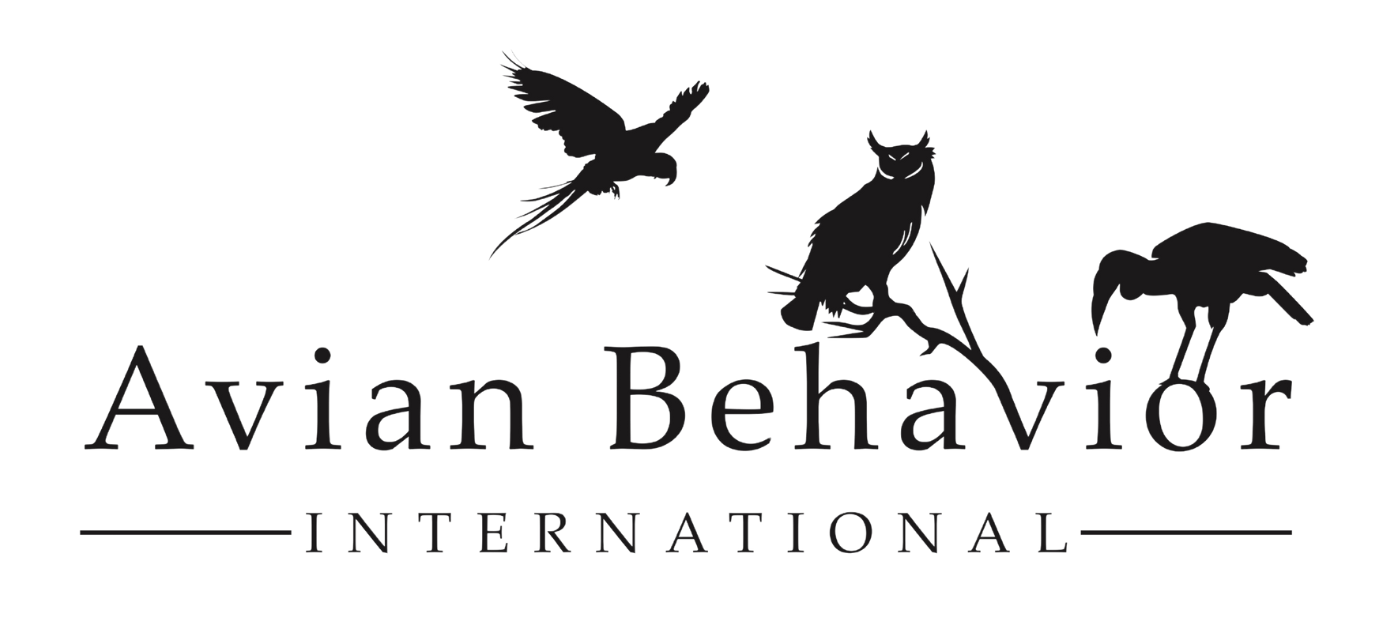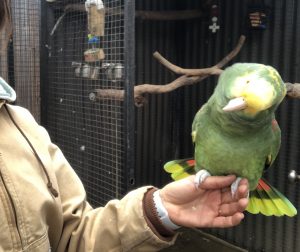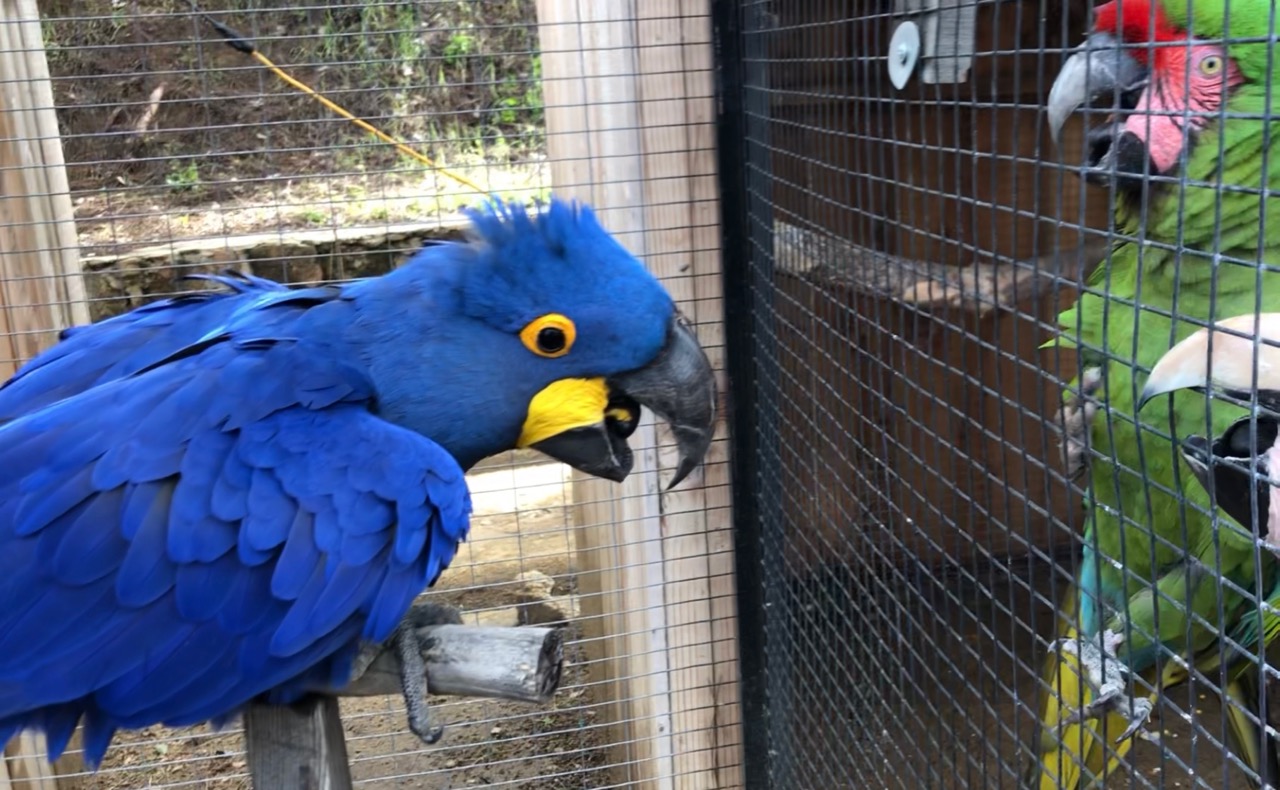
19 May Living a Bite Free Life Part 2: Stopping the Biting
In the preceding article about parrot biting, we focused on how to stop bites before they even start. This means having a good understanding of positive reinforcement, learning theory, as well as ethology. It also means shedding the stronghold that myths can have in companion animal culture. They are pervasive, giving us management theories such as dominance hierarchies, establishing ourselves alpha, that a parrot’s personality makes its behavior unchangeable, and creating narratives about what goes through our pets’ minds. These ideas at best, don’t work and more often than not, can actually undermine our ability to reach a solution to our behavior challenge.
In this next and final segment about how to live a bite free life with our parrots, we are going to talk through strategies about what to do when a parrot already bites in ways that reduce
the behavior overall. Parrot biting is arguably one of the top three most common issues of parrot keeping, next to noise issues and feather destructive behavior.As mentioned previously, we want to establish the mindset that biting is an extreme form of communication, akin to yelling. We do not want our parrots to feel the need to yell their needs and desires to us, that it is much less stressful and thus healthier to communicate in calm “voices.” Or in other words, they can get their message across in less extreme forms of body language.
Teaching Your Parrot to “Speak” Softly and Why Gloves Don’t Stop Biting
What does a less extreme version of a bite look like? Perhaps a lowered head, an opened beak, a flare of the head, nape, or tail feathers, or even a subtle leaning away of the body posture is all that we need to know that we should stop what we are doing, whatever it is. If we ignore the body language, the message will just get louder. As so many of us have been taught, ignoring these signals or even ignoring the bite and “taking it” in order to show the parrot who is boss or show that biting doesn’t hurt simply leads to harder biting. The bites will come faster and get more intense and without the early warning signs. The beak will learn to grind to hit just the right bone angle to get the offending body part to move away faster.
Traditionally and even in some cases now, we see the advice of using gloves or a long sleeve to help protect our skin when we have a biting issue. Using the information above, however, one can easily see how using a glove or protective sleeve might actually make the problem worse, as the parrot will only try to intensify his form of communication in order to get the desired reaction. The glove does not bring the animal and human closer, it only creates frustration and blocks effective relationship building.
Why Bites Aren’t a Personal Offense
With that in mind, for many of us as companion parrot owners, it is difficult not to take these bites personally. As providers for our parrots and desirous of a lasting friendship, we are doing what we know as humans to provide for them to avoid these bites, so they are painful not just physiologically but emotionally. In my practice as a consultant, I have found that we often create narratives to help derive explanations as to why these bites occur. Many of these narratives
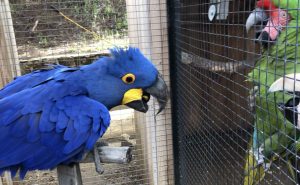
Learning the environmental conditions that lead to biting can help us avoid making the mistakes to reinforcing the wrong behavior.
come from human emotions of jealousy, dominance, or punishment for being left alone. What these narratives do not do in addition to providing factual, substantive information about avian psychology, for we cannot even read the minds of our friends, family, and significant others, let alone the mind of a completely different species, but creating a place-holding narrative, or pseudo-diagnosis does not lead us to a solution.
Instead, we can provide a useful antidote to these potentially false narratives by using the practice of observation. We can take a close look at the specific circumstances under which the parrot bites and ask questions. Our questions start with a narrow focus, and if we still do not have the answers we need, we can broaden the questions to more distant antecedents. What happens just before the parrot bites? Where is it? What are the humans doing in the environment? Is there something else going on around the parrot at that time? What happens after the bite occurs? Does the biting happen at the same time of day? Is there anything new in the environment? Does the biting increase during a certain time of year? Can we assess this critical question: Is the parrot biting to get something he does want or something that he does not? Positive reinforcement training focuses on how all of these predictors can give us information about what the parrot values.
The “When” of Biting Means Different Things
Not all biting is the same. A parrot that nips fingers at a computer keyboard while sitting next to his person’s workstation is different than a bite as the parrot is perched on the hand when being asked to step down on to the cage. If we analyze the consequence on the first scenario, the human might pick the parrot up and take him back to his perch, and the parrot has learned that nipping at computer fingers has earned him some one on one human time and will learn to repeat the behavior. In the second scenario, the parrot has learned through experience that approaching the perch means the human will set it down and leave it alone. Biting the hand it stands on is a communicating that this consequence is not one that it values.
Once we have some of the answers to our questions, where do we go from there? How do we get to a place where we can use the most positive, sustainable ways of behavior change to create lasting solutions?
The key concept to keep in mind is that we aren’t trying to change the animal, we are trying to change the environment. This, in turn, creates a medium supportive of different behavior.
For instance, I get asked many times how to stop a parrot from nipping at fingers while a human is working is typing on the computer. This is similar to when a parrot learns to nip at its human’s ear or neck while sitting on the shoulder and subsequently achieves the consequence of a reaction from the human by stepping the parrot up and setting it somewhere else or perhaps giving it a little beak wrestle to keep that beak occupied. We have a pretty good idea now that if we do not react at all the beaking and nipping will most likely intensify and get more dangerous.
Instead, we want to focus on replacing the inappropriate behavior with one that is of equal or greater value and giving 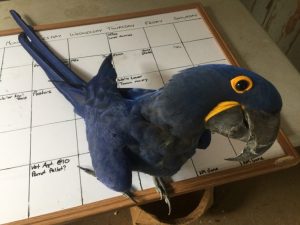 the parrot a way of getting the same response from us with a more desirable cue from him. For instance, when we are sitting at our workstation and the parrot at his play area nearby, we can make sure to load him up with fun play items that we know will keep him busy. Every once in a while we can walk over and say hello, step him up for a quick scratch or minute of one on one time, and set him back down to let him keep playing. At first, our intervals might be short to ensure success, particularly if the parrot has a well-rehearsed habit of hopping off his play area. But once he begins to understand and expect us to come to him, we can vary up the intervals and reinforcers he will receive in his space until we start building longer and longer durations. This same concept can be applied to just about anywhere, from shoulders, biting while perched on the hand, to cages, where parrots often develop a routine of climbing down on to the floor and biting unsuspecting toes.
the parrot a way of getting the same response from us with a more desirable cue from him. For instance, when we are sitting at our workstation and the parrot at his play area nearby, we can make sure to load him up with fun play items that we know will keep him busy. Every once in a while we can walk over and say hello, step him up for a quick scratch or minute of one on one time, and set him back down to let him keep playing. At first, our intervals might be short to ensure success, particularly if the parrot has a well-rehearsed habit of hopping off his play area. But once he begins to understand and expect us to come to him, we can vary up the intervals and reinforcers he will receive in his space until we start building longer and longer durations. This same concept can be applied to just about anywhere, from shoulders, biting while perched on the hand, to cages, where parrots often develop a routine of climbing down on to the floor and biting unsuspecting toes.
Biting to Step Up or Step Down
A parrot that bites when being asked to step up can be taught in a series of steps to walk on to the hand without biting using treats and positive reinforcement (see one of our YouTube videos with a 30 year old blue and gold macaw right here). Similarly, a parrot that bites when stepping back into the cage or on to a perch can be reinforced by getting a treat once it steps down and he will learn that stepping off the human (high inherent value) and in to the cage (lower inherent value – less social time) will be worth something good.
Developing a supportive environment for desirable behavior takes a bit of extra effort at first as we reset the tracks of our own thinking and create a new paradigm through which the parrot now will navigate. But instilling consistency and 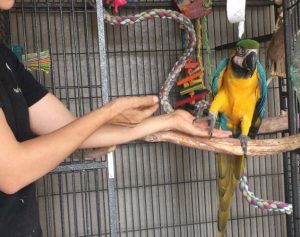 patience will pay off in dividends and ensure that the transition time is as economical and efficient as it needs to be to help the parrot learn these new skills and minimize its stress and frustration.
patience will pay off in dividends and ensure that the transition time is as economical and efficient as it needs to be to help the parrot learn these new skills and minimize its stress and frustration.
Working through biting issues when a parrot bites to avoid doing something it doesn’t want to do, whether it’s stepping on to the hand, stepping off, meeting new people, requires careful observation of body language.
When a bite or even unpleasant, pre-bite body language does occur while the bird is on our hand or approaching us, we don’t drop the bird even if it is fully flighted. We set the bird down without a reinforcer as calmly as possible and walk away. We come back in a few seconds and try again, offering a short, high-value interval of interaction to keep the session positive and rewarding for both human and parrot.
New skills like stepping up and down without biting are an important part of a lasting relationship. For many, reaching into the cage to switch out toys or changing food bowls can also create a scenario likely to bring out about biting. Whether we decide to remove the parrot from the cage during these times, teach him to station in a different location, or train him to drop an object on cue in case he has a dangerous object, we can not only avoid getting bitten, but also provide a valuable opportunities to provide the parrot with information on what to doand how to get something it values rather create a stressful interaction for both human and parrot.
Over-Excited Parrots
One final and important piece of the puzzle is to pay close attention to the environmental conditions that decrease the value of food and increase the probability of biting to occur. Most of these situations look like full blown over-excitement, whether it’s sexual behavior and nesting opportunities, like those discussed in the previous article, or other environmental conditions that get the parrot excited. This can be high energy coming from the humans or other animals, another parrot in the area whose relationship in one way or another helps the parrot get overstimulated, or it could be certain times of the day that bring about these specific conditions in your individual parrot.
When this is the case, food value typically goes down and it is highly likely the parrot will bite at anything. Even if a parrot can’t actually reach out and bite a person when he is overexcited, those feelings of pent up excitement and can lead into lingering frustration when the parrot finally gets his chance to reach out for a nip, leaving a person bewildered and hurt, not understanding where this “unpredictable” bite came from. By avoiding these situations, moving the parrot to a different play area if we know there will be a certain activity that creates these overexcited conditions or keeping it otherwise sufficiently occupied, we bring about a culture of less biting as a form of communication. And less biting in specific situations potentially means less biting overall.
Creating a relationship with our parrots that seeks to reduce stressful interactions is one that seeks long term happiness. By ferreting out the problem areas in our relationship and striving for the most sustainable, positive way for us to work through our challenges, we are providing the commitment our parrots and our families need to live a more peaceful and bite-free life with together.
Don’t miss parrot behavior and training tips and resources! Sign up for our email list here.
